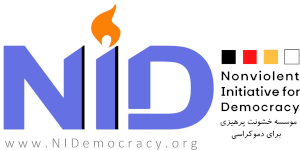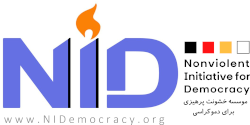writer: awat pouri
According to research by the International Center on Nonviolent Conflict, civil resistance is categorized into three levels of action: Actions, Campaigns, and Movements. Michael A. Beer, in a study titled “Civil Resistance Tactics in the 21st Century”, argues that by examining three parameters of goals, duration, and means of struggle, each of these levels can be distinguished and defined separately. Accordingly, an action refers to a level of civil resistance in which some individuals use specific tactics for several hours to several days to achieve limited objectives. A campaign follows a specific strategy to achieve a set of goals over several months or years, while a movement is organized by planning and implementing a grand strategy in pursuit of long-term visions, even spanning decades.
In 1973, a political science theorist, Jane Sharp, compiled and published for the first time a comprehensive list of 198 methods for civil resistance. However, since the formation and growth of civil resistance movements fundamentally depend on the production of new methods and tactics for the struggle, it didn’t take long for other lists to emerge. The “Civil Resistance Tactics” database is one of the most comprehensive lists in this regard. More than 300 tactics of civil resistance are listed in this database, which is available online for free on the website of the International Center on Nonviolent Conflict”. According to this database, civil resistance tactics can generally be formulated in three categories: Saying (acts of expression), Not Ddoing (acts of omission) and Doing or Ccreating (acts of commission) , each of these types of actions may be Confrontational (coercive) or act Constructive (persuasive).
The effectiveness and success of a civil resistance movement is directly related to the quantity, quality, and coordination of methods and tactics created and employed by various civil groups that are part of the movement. The quality of actions or campaigns undertaken by each of these social groups depends more on the extent of their coordination with the overall strategies and perspectives of the civil resistance movement, rather than just their individual initiative and ability to organize that group. This is bBecause each of these groups become a part of the civil resistance movement when they are no longer just expressing and acting for their rights and demands, but also for broader and more comprehensive goals. The magnificent speech (https://www.youtube.com/watch?v=4AabjOiqo7s) of Walter Reuther, the president of the United Automobile Workers of America, on August 28, 1963 in Washington, D.C. can be considered one of the most prominent historical examples of this form of solidarity. He stood alongside the massive number of marchers of the civil rights movement, representing all white workers, and considered their struggle for equal rights as the struggle of all American workers: “I am here today with you because with you I share the view that the struggle for civil rights and equal opportunities is not just a struggle for black Americans, but a struggle for all Americans to join in.”
“The American Federation of Labor and Congress of Industrial Organizations” (AFL-CIO) was made up of a collection of labor unions, some of which openly supported the civil rights movement. In fact, they were the most important allies in the struggle for African Americans. Thomas Sugrue, a prominent American sociologist and professor of history at the University of Pennsylvania, evaluates the relationship between white workers and the American black community during the civil rights movement as follows: “They recognized the same root of racial discrimination for American blacks and economic instability for white workers and believed that their fate was tied to opening up the job market for African Americans.”
Regardless of this historical example, civil resistance emerges from joining together the struggles of different groups with diverse identities, demands, and interests.
According to research by the International Center on Nonviolent Conflict, civil resistance is categorized into three levels of action: Actions, Campaigns, and Movements. Michael A. Beer, in a study titled “Civil Resistance Tactics in the 21st Century”, argues that by examining three parameters of goals, duration, and means of struggle, each of these levels can be distinguished and defined separately. Accordingly, an action refers to a level of civil resistance in which some individuals use specific tactics for several hours to several days to achieve limited objectives. A campaign follows a specific strategy to achieve a set of goals over several months or years, while a movement is organized by planning and implementing a grand strategy in pursuit of long-term visions, even spanning decades.
In 1973, a political science theorist, Jane Sharp, compiled and published for the first time a comprehensive list of 198 methods for civil resistance. However, since the formation and growth of civil resistance movements fundamentally depend on the production of new methods and tactics for the struggle, it didn’t take long for other lists to emerge. The “Civil Resistance Tactics” database is one of the most comprehensive lists in this regard. More than 300 tactics of civil resistance are listed in this database, which is available online for free on the website of the International Center on Nonviolent Conflict”. According to this database, civil resistance tactics can generally be formulated in three categories: Saying (acts of expression), Not Ddoing (acts of omission) and Doing or Ccreating (acts of commission) , each of these types of actions may be Confrontational (coercive) or act Constructive (persuasive).
The effectiveness and success of a civil resistance movement is directly related to the quantity, quality, and coordination of methods and tactics created and employed by various civil groups that are part of the movement. The quality of actions or campaigns undertaken by each of these social groups depends more on the extent of their coordination with the overall strategies and perspectives of the civil resistance movement, rather than just their individual initiative and ability to organize that group. This is bBecause each of these groups become a part of the civil resistance movement when they are no longer just expressing and acting for their rights and demands, but also for broader and more comprehensive goals. The magnificent speech (https://www.youtube.com/watch?v=4AabjOiqo7s) of Walter Reuther, the president of the United Automobile Workers of America, on August 28, 1963 in Washington, D.C. can be considered one of the most prominent historical examples of this form of solidarity. He stood alongside the massive number of marchers of the civil rights movement, representing all white workers, and considered their struggle for equal rights as the struggle of all American workers: “I am here today with you because with you I share the view that the struggle for civil rights and equal opportunities is not just a struggle for black Americans, but a struggle for all Americans to join in.”
“The American Federation of Labor and Congress of Industrial Organizations” (AFL-CIO) was made up of a collection of labor unions, some of which openly supported the civil rights movement. In fact, they were the most important allies in the struggle for African Americans. Thomas Sugrue, a prominent American sociologist and professor of history at the University of Pennsylvania, evaluates the relationship between white workers and the American black community during the civil rights movement as follows: “They recognized the same root of racial discrimination for American blacks and economic instability for white workers and believed that their fate was tied to opening up the job market for African Americans.”
Regardless of this historical example, civil resistance emerges from joining together the struggles of different groups with diverse identities, demands, and interests.
In 2021, the Coordinating Council of Teachers’ Trade Unions issued a total of 11 calls for simultaneous gatherings of teachers and retirees across the country. These calls, which are unique in the history of the Coordination Council, led to the holding of 1,374 protest rallies throughout the year. This event marked the first time in the history of the Islamic Republic that simultaneous and nationwide organized protests took to the streets, followed by widespread support from labor unions and other social groups.
The teachers’ protest campaign in 2022 took a historic initiative with a simple shift in their campaign tactics. The Coordinating Council of Teachers’ Associations, just a few days before May 2nd (12 Ordibehesht), which has been named as “Teacher’s Day” by the government, announced International Workers’ Day as the date for one of their nationwide and simultaneous gatherings of teachers as the time to hold one of the nationwide gatherings of teachers.
This initiative not only demonstrated solidarity with workers and garnered their attention and support but also, it was a radical and purposeful protest against the definition of the position and duties of a “good teacher” from the government’s point of view. Following this call, teachers and retirees took to the streets in dozens of cities across Iran on May 1st (11 Ordibehesht), in a massive demonstration that practically challenged the authority and dominance of the government. This incident paved the way for the Unified Bus Company Workers’ Syndicate in Tehran and Its Suburbs to take action once again after a 17-year break in nationwide strikes due to repression. With a coordinated strike, they were able to seriously disrupt the traffic of the capital for two days.
Among the other initiatives of the Coordination Council, we can mention the call for teachers and students to strike in September-October 2022, which opened a new page in the history of Iran’s civil resistance by highlighting the potential capacity of students to play a role in social changes. In April-May 2023, this council brought out its implicit goal of the previous year in defiance of the teacher’s government day, this time more openly and bravely, and in its call for May 9nd, the anniversary of the execution of Farzad Kamangar, as the day for a nationwide and simultaneous gathering of teachers. This action signified the council’s definitive stance and the crossing of the government’s red lines by the teachers’ movement completely.
An overview of the growing trend in labor and trade union protests in recent years shows that the writing and issuance of the first charter of the “Women, Life, Freedom” movement by labor and trade unions and unions associations is not just a coincidence. Instead, it is the remarkable result of mutual thinking, coordination, collaboration, and solidarity among these groups, along with their active and continuous connection with the body of the society. This achievement has been gradually attained over several years with seriousness and assiduity. Therefore, the “Charter of Minimum Demands of Union and Civil Organizations of Iran” should be considered not the first, but the last and at the same time the only living and contemporary manifesto of the Women, Life, Freedom Movement.



